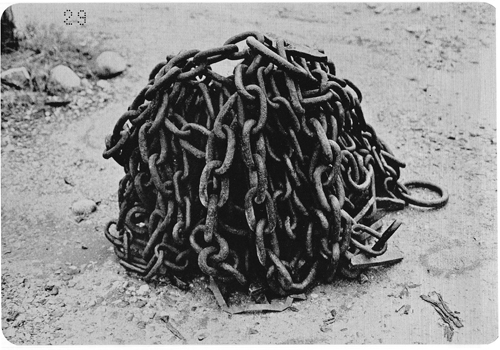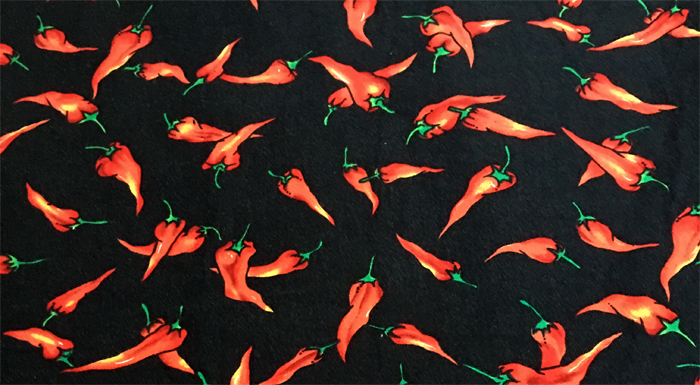The article published in Artforum magazine in 1966 displays the academic strength and scholarship of Professor von Meier as he embarked upon teaching at UCLA. Literally surging with creativity, Kurt quickly assumed a leading role in the world of art criticism, writing for the leading publications in that field. His writing is polished and penetrating; his file containing his original drafts and notes make it clear this article was a major undertaking. It has been updated with links to online resources, and photos and images relating to the text have been added.
Review: Anton Ehrenzweig, The Hidden Order of Art
Kurt was a regular contributor to the Los Angeles Free Press, an alternative newspaper which was published weekly from 1964-1978. This book review by Kurt from 1967, published in the Los Angeles Free Press, reveals the meaningful influence of the work of Marshall McLuhan and Buckminster Fuller on Kurt at that time. His criticisms of higher education are forthright; the impacts of Buddhism, G. Spencer Brown's Laws of Form, and leaving UCLA, Los Angeles and the world of art criticism for the bucolic Napa Valley and a professorship at Sacramento State University remained ahead.
The Background of Transparency and Some Insights into Reflection
"Scholarly writing is that in which the author explains his own jokes, tells you where he heard each one of them, and if he can, who told them first." In making this comment, Kurt appears to be referring to this essay and to himself. Written in 1968 for an exhibition at California State College at Fullerton while he was living in Venice, California in his last year as an assistant professor at UCLA, it almost appears as if Kurt is mocking criticism, scholarship, and art while indulging in that of which he feels critical. He gave up writing as an art critic not too long thereafter. It's an informative essay, but oddly self-negating.
The Artist as Shaman
Written in 1969 or 1970, this essay presages the very dilemma the world finds itself in today. Kurt declares civilization's state of emergency, noting the ecological, political and social fragmentation and damage to human society, the planet and its inhabitants. He reviews the role of art in the development of civilization--how artists have been used and abused by those in power, but still manage to provide vision and impetus for positive change. This essay is an uncompromising and erudite indictment of "business as usual" in the 20th century, and remains highly relevant to those of us now living in the 21st century.
On Semene, Lexeme and Sgt. Bilko
A letter from the Notebooks of von Meier
Within the Archives of von Meier are snippets, fragments and copies of letters. Some of them are all business, but most are musings and contemplations, dipping into Kurt's ever-running stream of consciousness. This letter appears to be Circa 1976, written while he was on sabbatical leave from Sacramento State University. Rather Joycean in its style (Kurt was a big fan of James Joyce) it displays his inventiveness, humor and joy.
From the Void to Architecture
In this previously unpublished essay, Professor von Meier takes us on a journey from the void to the origins of architecture, and its roots in the realization of Unity. In his usual style, he takes a few detours: The Heart Sutra, the history of the Great Seal of the United States, Eggplant Parmigiana, and modes of thought. Keep in mind this was written well before the advent of Wikipedia, and reveals Kurt's ability to pull information from disparate sources.
A Portfolio of Piles
In cooperation with Fine Arts Gallery at the University of British Columbia, artist Iain Baxter, President of N.E. Thing Co. commissioned Kurt to write an essay to accompany a portfolio of fifty-eight black and white photographs of piles - chains, lumber, donuts, wire, scrap metal, cargo containers - the sorts of piles we see around us every day. In the same way he played rugby, Kurt grabbed the subject and ran with it in an entertaining, informative and unexpected way.
CHINA
In this essay, Kurt's reflection on Chinese food leads to the topics of the history of food, agriculture, the neolithic revolution, population growth, chopsticks, and enlightenment. Judging from the references, it appears this was written around 1982 and it's interesting to note the ways in which Kurt's concerns and predictions have come to pass, or not. There are no references in his files indicating it was ever published, submitted for publication or even completed. However, it also includes some autobiographical information, an uncommon element in most of his essays. (Photos and hyperlinks have been added; the photo above is of a chopstick holder produced in China during the Cultural Revolution).
IKAT Art of the Ancient Peoples
In 1982, Kurt curated an exhibit in Sacramento State's Robert Else Gallery of Ikat, weaving of the ancient people of Indonesia. A catalog of the exhibit (collection of Joseph Edmondson and Herbert Solomon) was printed, with an essay by Kurt about the people of Indonesia, their cultural history and the role of ikat in their social and ceremonial life. Examining the "warp" of ancient and modern civilization, Kurt weaves an engaging fabric of his own.
The OMASTERS - Report from Soofi Central
Kurt's study, with his friend Cliff Barney, of G. Spencer Brown's Laws of Form generated a surge of creativity in Kurt resulting in sample chapters of a book called Omasters. A multi-dimensional-story-line fantasy adventure in part about a space vessel shaped like a tortoise shell in danger of falling into a black hole, hundreds of pages were generated, and literary agent John Brockman tried, unsuccessfully, to find a publisher for the book. Funny, confusing, arcane, and filled with scholarly references, it was just too wild for the traditional world of publishing in 1979. An encouraging rejection letter from Doubleday/Anchor Books to their agent John Brockman is illustrative. From what appears to be Kurt's original typed pages, you can enjoy a bit of Omasters right here. More to follow!
Art 102 - Aesthetics and Criticism - 1993
One way to understand the mind of Kurt von Meier is to examine what and how he taught. He poured himself into his teaching and his students got the real deal; a teacher of vast knowledge and insight unafraid to tell the truth. And he did it in an entertaining way. The course materials below are a good example of where the mind of von Meier could, and did, go. Everyone was welcome to hop aboard for the ride.
Sabbatical Leave Report - 1975
Sabbatical leave every seven years is one of the benefits of being a tenured professor, which Kurt was at Sacramento State University. One wonders, however, what his Art Department Chair made of this report from Kurt about how he spent his sabbatical leave. Never one short for words, Kurt used the opportunity to expound on his favorite topics of the time - The Laws of Form and Vajrayana Buddhism.
K von Meier McLuhanesque - The Hot University
In 1967, Kurt took on the University Establishment in a searing essay about education as social policy. Using the ideas of media-critic and university professor Marshall McLuhan, Kurt labels incoming Governor Ronald Reagan as the first wave of an anti-intellectual conservatism threatening the very foundations of university life and higher education. Looking back, we can now see how prescient Kurt was.
Fire, Architecture, Astronomy, Language, Time and Unity
In this wide-ranging essay, Professor Kurt von Meier, Ph.D is on full display, brilliantly connecting dots, a polymath drawing upon the full range of his ability to weave a multicolored cloth from many diverse threads. Beginning with the fire at the Diamond Sufi Ranch which irreparably damaged the main house, Kurt moves through the disciplines of architecture, language, mathematics, astronomy, cultural anthropology and mystical traditions. There is no evidence this essay was ever published, and perhaps Kurt considered it a draft. You will have to read it more than once; it's that densely packed. All that notwithstanding, it has most likely not seen the light-of-day since he completed it in July of 1979, but is now available for your enlightenment.
For the Love of the Chile
Kurt loved hot and spicy food and chile peppers played a starring role in his cuisine. Naturally, his taste inclined him to scholarship and this short essay written in 1984 about chile peppers, their discovery and use. He also provides an in-depth and amusing discussion about preparing Pasta al Pesto.
The Current Moment In Art
In 1966, Kurt attended a conference and art exhibition in San Francisco entitled "The Current Moment in Art", which he covered for an article in Art International magazine. Predictably, he found "the current moment" of concern. He writes about "...the relative swiftness and totality with which the artistic revolutionaries of yesteryear have become the True-Believers and reactionaries of today....Eventually it must be asked how the Establishment either encourages or discourages, stimulates or represses, helps or hinders the creation of new works of art."
On Brown's Laws of Form
Kurt and Clifford Barney (his close friend and collaborator) spent years plumbing the depths of G. Spencer Brown's Laws of Form, published in 1969. A subject of creative speculation and deep contemplation, their interest resulted in meetings with Brown and the convening of a symposium at Esalen in 1973, entitled the "AUM Conference". Attendees at the conference included von Meir, Barney and Brown, of course, plus Alan Watts, John Lilly, Gregory Bateson, Ram Dass, Karl Pribram, Claudio Naranjo, Heinz von Foerster, Charles Tart, Douglas Kelly, Ted Guinn, and Steward Brand. A short text by Kurt and Clifford explains their interest in Laws of Form.
Love, Mysticism and the Hippies
The Establishment, including its mainstream magazines like Vogue, struggled to remain relevant in the midst of the social and cultural turmoil of the 1960's, and reached out to Kurt, hoping his perspective on the "counter culture" would be of interest to its readers. Naturally, Kurt went places in his article only the most daring and open-minded might follow.
Violence - Art and the American Way
Protesters at the Destruction In Art Seminar in London, 1966 (photo John Prosser)
The 1960s were violent and tumultuous; assassinations, war in Viet Nam, inner-city riots and student protests kept the country on edge. Naturally, art reflected the times, and events such as the Destruction In Art Seminar in London in September, 1966 offered performances by destruction artists. Kurt was right in the middle of it, and wrote this essay, which appeared in the publication ArtsCanada.








































